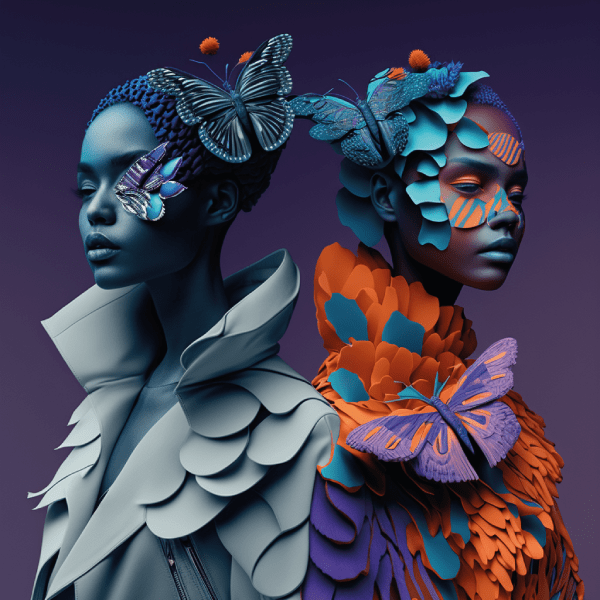Introduction
The fashion industry is known to be one of the most polluting industries in the world. With fast fashion, overproduction, and unsustainable practices, the industry is responsible for significant carbon emissions, waste, and environmental damage. However, things are changing, and a new era of sustainable fashion is emerging.
In this blog post, we will explore the sustainable fashion industry of the future and how it could transform the way we consume and produce fashion.
Sustainable materials
One of the key features of the sustainable fashion industry of the future is the use of eco-friendly and sustainable materials. These materials are renewable, biodegradable, and have a lower environmental impact than traditional fabrics. For example, fabrics made from organic cotton, hemp, bamboo, and linen require less water, pesticides, and chemicals than conventional cotton.
Furthermore, recycled and upcycled materials like PET bottles, plastic waste, and old garments can be turned into new textiles, reducing the amount of waste that ends up in landfills and oceans.
Clean production
The sustainable fashion industry of the future also focuses on clean production methods that reduce the carbon footprint and minimize waste. Innovative technologies like 3D printing, digital textile printing, and blockchain can make the production process more efficient and transparent. For instance, 3D printing can reduce waste by producing garments on-demand, reducing the need for inventory and overproduction.
Digital textile printing can save water and energy by printing designs directly onto fabric without using water-intensive dyeing processes. Additionally, blockchain technology can help track the supply chain and ensure that the materials and production processes are ethical and sustainable.
Circular economy
Finally, the sustainable fashion industry of the future embraces the circular economy model, where waste is reduced, reused, and recycled. Garments are designed to last longer, be repaired and reused, or recycled into new products.
Additionally, rental and subscription models, swapping, and secondhand marketplaces enable consumers to access fashion without contributing to waste and overproduction.
Conclusion
The sustainable fashion industry of the future offers a promising alternative to the current unsustainable practices of the fashion industry. By focusing on sustainable materials, clean production, and the circular economy model, the industry can significantly reduce its environmental impact and improve social and ethical practices.
As consumers, we can also contribute to this movement by supporting sustainable brands, buying fewer and better quality clothes, and embracing circular consumption models.
Companies that are leading the way in sustainable fashion
- Patagonia – The outdoor clothing brand has been using sustainable materials for years, such as recycled polyester, organic cotton, and hemp. Patagonia also encourages customers to repair and reuse their clothing, rather than buying new items.
- Allbirds – This shoe brand has gained a cult following for its comfortable and sustainable footwear made from renewable materials such as wool and eucalyptus. Allbirds also uses recycled materials for its packaging and has a closed-loop system for its manufacturing waste.
- Adidas – The sportswear giant has created a 3D-printed shoe, called the Futurecraft 4D, using a new technique that creates a “digital light synthesis” process. This method combines light and oxygen to print a high-performance material that is both durable and lightweight.
- Stella McCartney – The fashion designer is a pioneer of sustainable fashion and has been using eco-friendly materials in her collections for over a decade. McCartney uses fabrics such as organic cotton, recycled polyester, and vegan leather made from mushrooms.
- Bolt Threads – This biomaterials company produces silk-like fibers made from spider silk proteins that are genetically engineered and produced through fermentation. These fibers can be used for sustainable clothing, and Bolt Threads has partnered with companies such as Stella McCartney and Adidas to incorporate the fibers into their products.
- Reformation – The women’s clothing brand is committed to sustainability, using eco-friendly materials such as recycled polyester, Tencel lyocell, and deadstock fabric. Reformation also uses a closed-loop system to recycle its fabric scraps and has implemented sustainable practices in its factories, such as using renewable energy and reducing water usage.
- Prada – The luxury fashion brand has introduced its Re-Nylon collection, which features sustainable nylon made from recycled ocean plastics. Prada also uses eco-friendly materials such as organic cotton and has committed to reducing its greenhouse gas emissions by 50% by 2025.
- Pangaia – This sustainable fashion brand uses innovative materials such as seaweed fiber and recycled plastic bottles to create eco-friendly clothing. Pangaia also uses sustainable practices in its factories, such as using renewable energy and reducing water usage.
- Rothy’s – This shoe brand creates sustainable and eco-friendly footwear made from recycled plastic bottles. Rothy’s also uses 3D knitting technology to reduce waste and create a seamless shoe design.
- Cariuma – This sneaker brand creates sustainable footwear made from natural and eco-friendly materials, such as bamboo and recycled plastics. Cariuma also uses ethical and sustainable practices in its production processes, such as fair labor and reduced water usage.
These are just a few examples of companies that are using sustainable materials and innovative technologies such as 3D printing to reduce their environmental impact and improve their sustainability practices.



